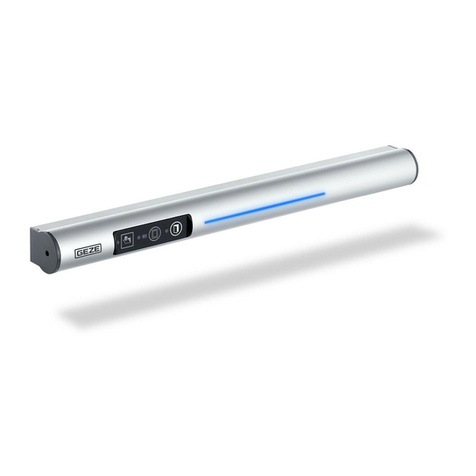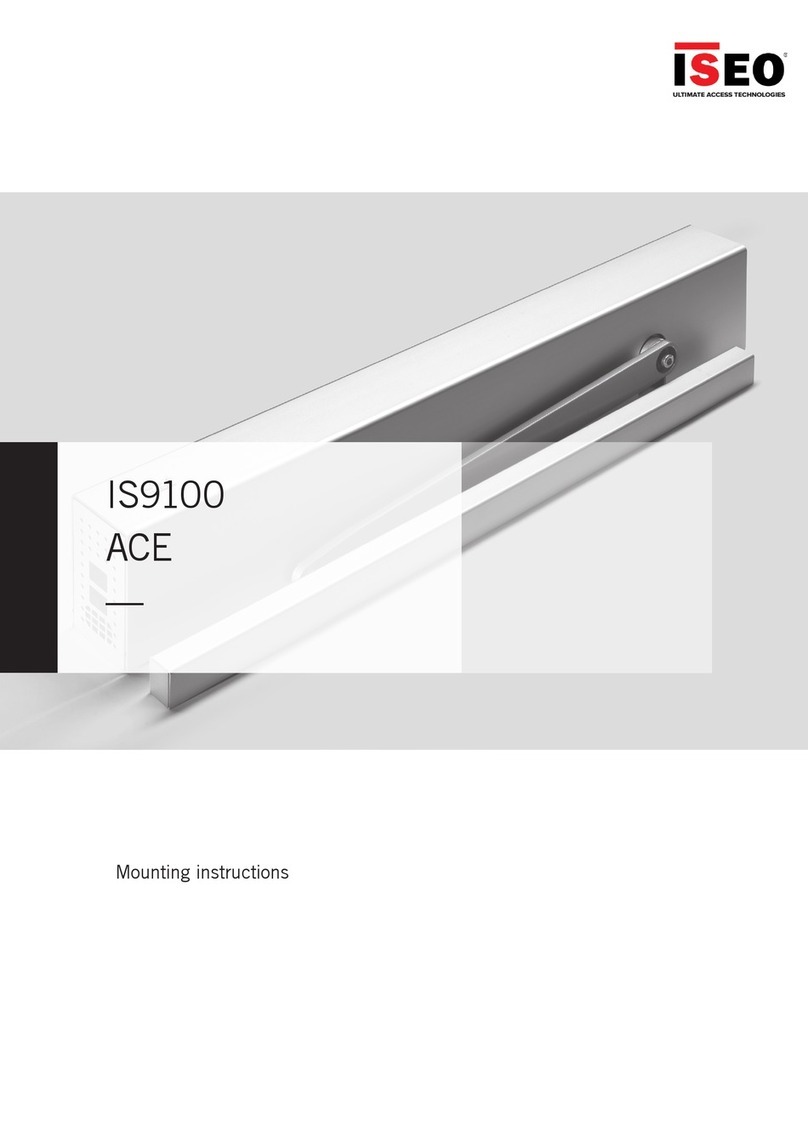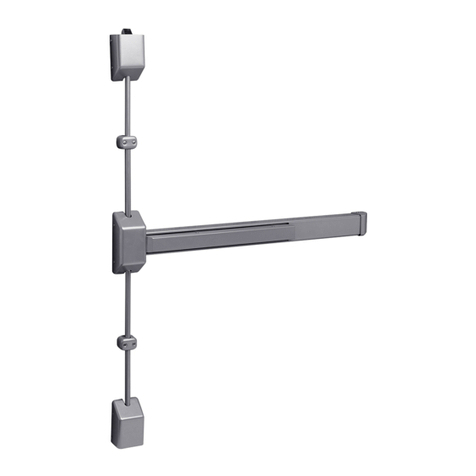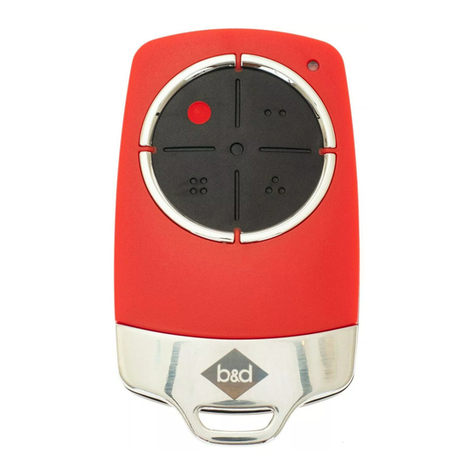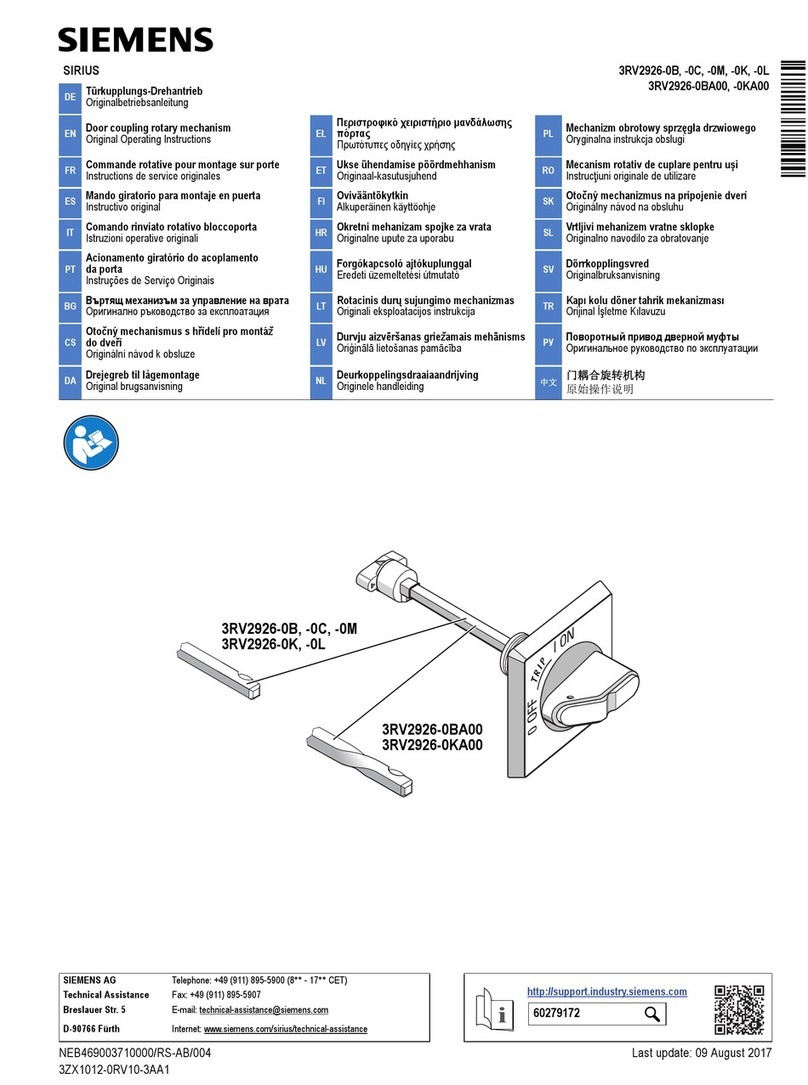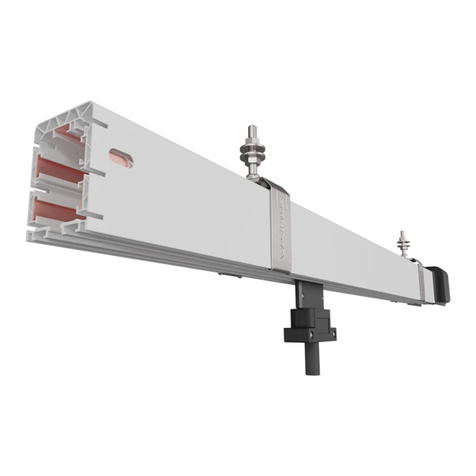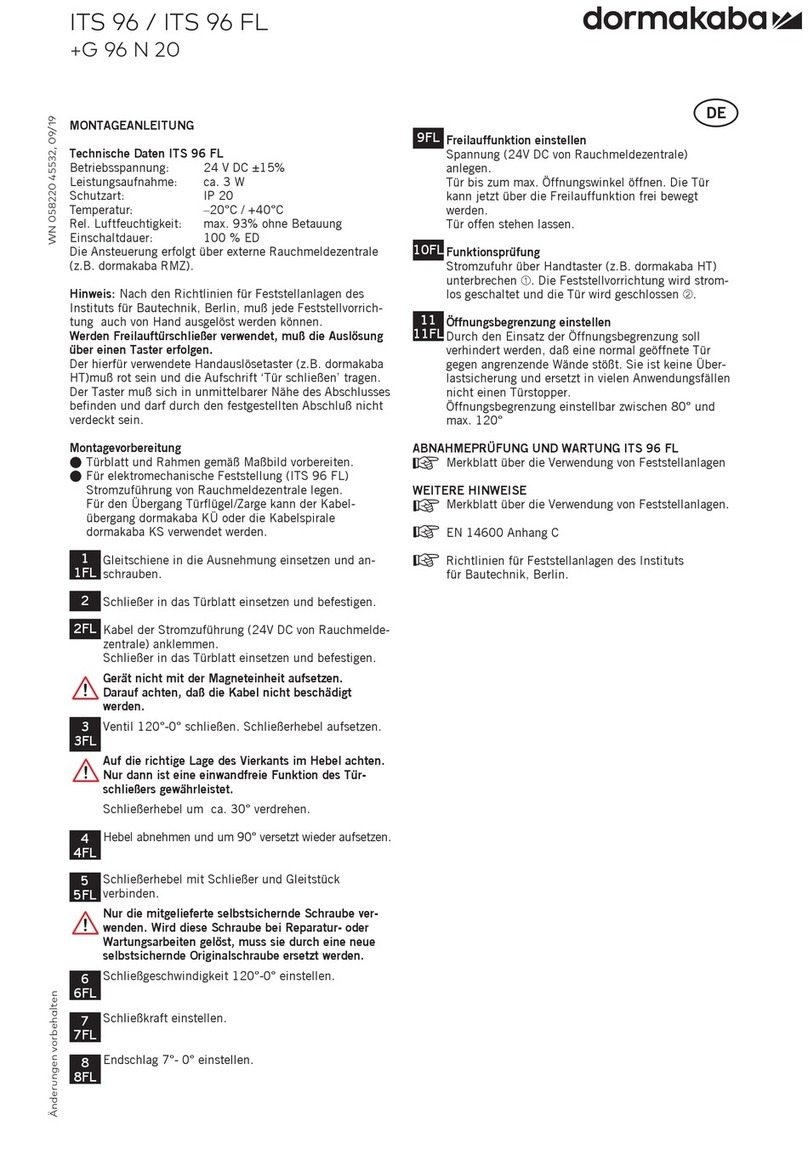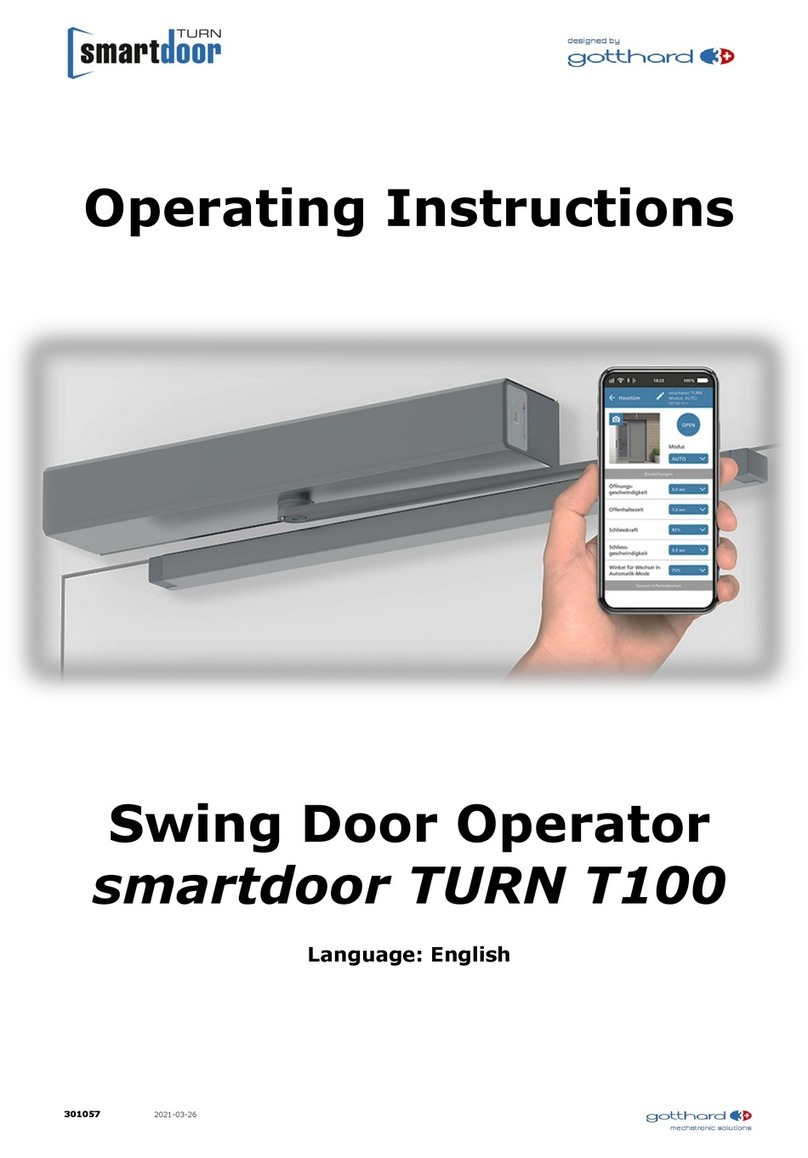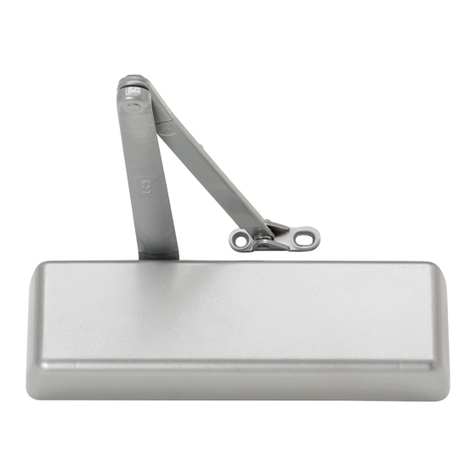
3.2) Attach the closer to the jamb bracket
Using the short pin, attach the closer rod to the jamb bracket. With one
hand, pull the cylinder out to expose more of the rod and then clip the
small yellow spacer onto the rod. (Fig. 5) Allow the cylinder to retract.
Note 1: If the closer does not retract, simply pull the cylinder again and
release. It should retract. Do not touch the button.
Note 2: For dual kits, the short yellow spacer goes with the push-button
closer (Fig. 5) and the long yellow spacer goes with the non-
button closer (Fig. 6).
3.3) Attach the door bracket to the door
Holding the assembly level, align the door bracket on the door. Drill a 1/8” pilot hole
through the exposed hole of the door bracket. Caution: Do not drill through the
outside of the door! Now, fasten the bracket to the door using one #10 x 5/8”
screw. Next, remove the door bracket pin, swing the door closer out of the way and
drill a 1/8” pilot hole through remaining hole of the door bracket. Fasten the other
#10 x 5/8” screw through this hole to complete the door bracket installation.
3.4) Reattach closer to the door bracket
Reattach the closer to the door bracket using the long pin and place the small
O-ring on the underside of the door bracket pin. Open the door and remove the
yellow spacer. YOU DID IT!!!
Note: For dual kits, repeat steps 3.1 through 3.4 for the second closer.
Operation and adjusting instructions:
•To hold the door open: Just press the Touch ’n Hold button.
•To close: Push the door open slightly and release. (don’t touch button)
To adjust closing speed:
•The door closers are adjusted at the factory for the comfort zone, to close
the door in 4-5 seconds.
•Closing speed may be adjusted from the thumbscrew shown in Fig. 7.
Caution: Do not use a power tool to install or adjust the screw.
It is recommended to adjust closers individually (with the other closer disconnected)
To adjust closing slamming:
Little or no slamming is needed to latch a light screen door while strong slamming is needed to latch a door provided with
heavy window and tight seals.
There are four adjusting positions by reversing the arrow direction on the door brackets and changing the hole that is
used to attach the closer:
Most Slamming:
(for heavy window and tight
seals) Arrow on door bracket is
pointed away from the hinge
and pin is in the hole at the end
of the door closer.
Standard Installation:
Arrow on door bracket is
pointed towards the hinge side
of the door and the pin is in the
hole at the end of the door
closer.
Less Slamming:
Arrow on door bracket pointed
away from the hinge side of the
door and pin is in the inner door
closer bracket hole.
Least Slamming:
(for light screen doors)
Arrow on door bracket pointed
towards the hinge side of the
door and pin is in the inner door
bracket hole.
INS-GS-SK-E rev A
Pg. 2
